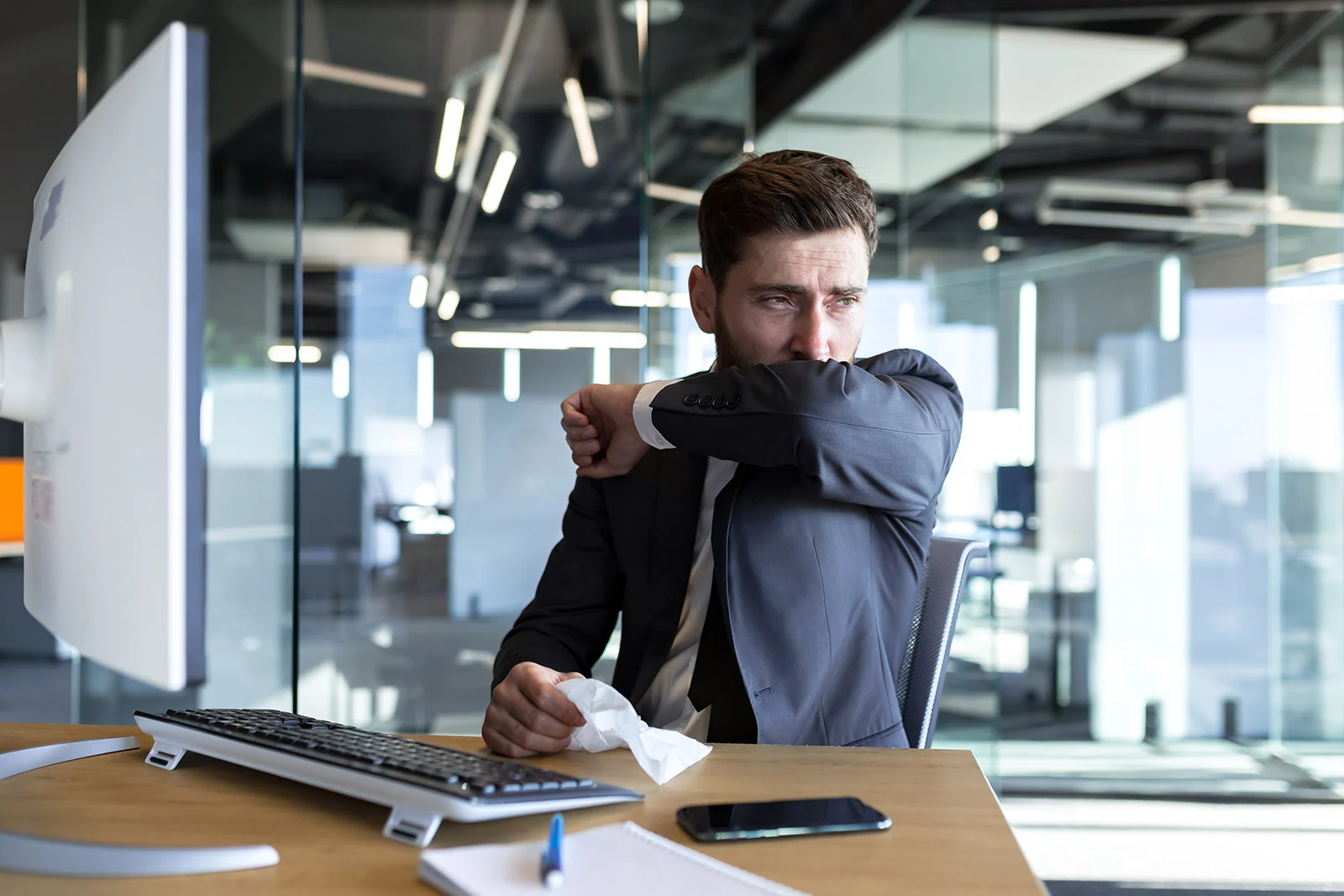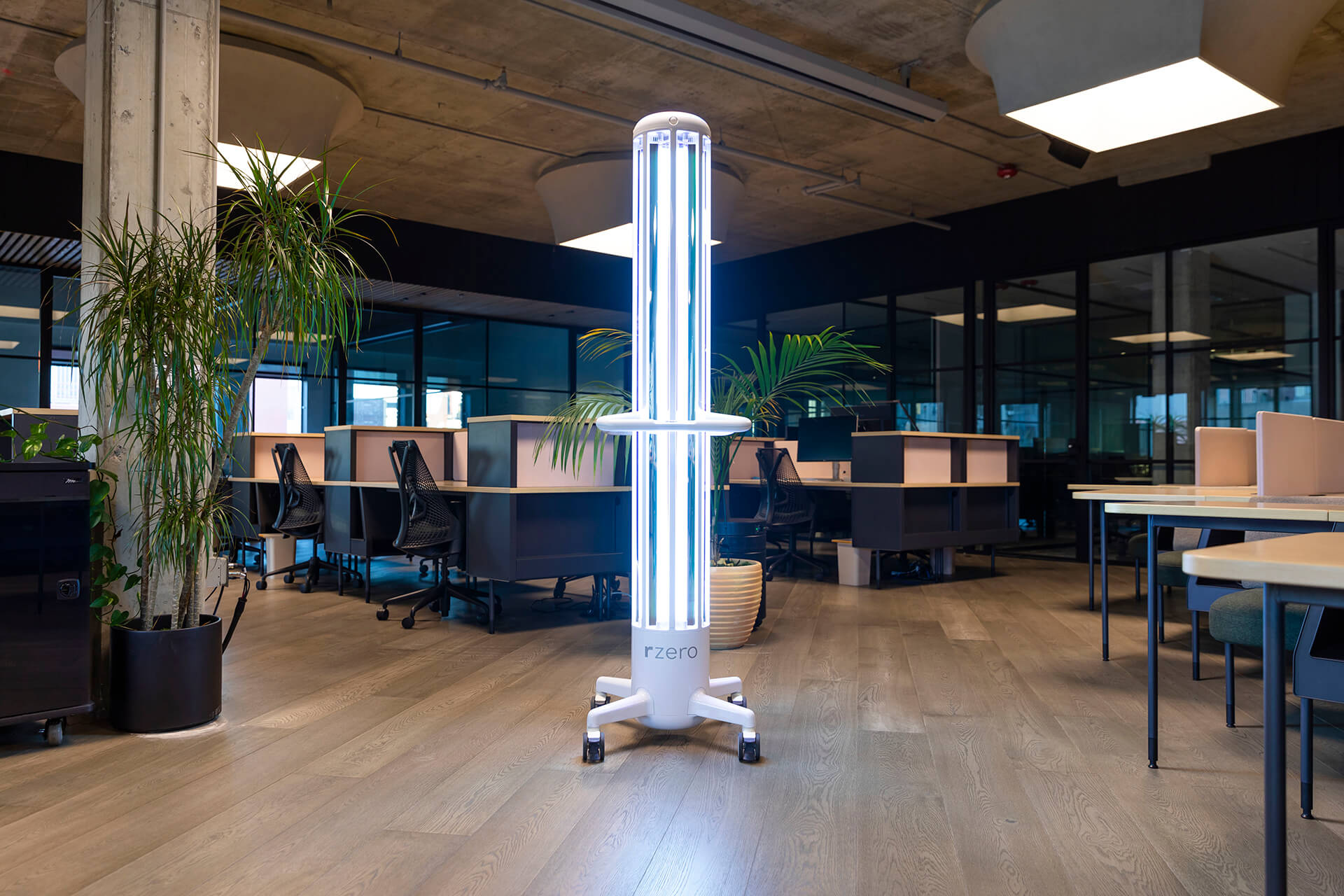
What is “Sick Building Syndrome?”
Overview of Sick Building Syndrome
Sick Building Syndrome (SBS) is the term used describe a condition where occupants of a building experience a range of symptoms, with no clear identifiable cause. These symptoms typically occur when spending time within an affected building, and typically improve upon leaving.
Sick Building Syndrome shouldn’t be confused with Building Related Illness (BRI), when a diagnosable illness is identified and traced to a direct cause in the building. For example, if a building’s occupants have fevers directly related to a building material found in the walls, that’s BRI.
SBS is characterized by a lack of clear cause, but has been linked to complaints about Internal Air Quality. The symptoms of SBS often fade soon after leaving the building.
Causes of Sick Building Syndrome
Sick Building Syndrome has been linked to poor indoor air quality and inadequate ventilation. A World Health Organization (WHO) Committee report in 1984 suggested that up to 30% of new or remodeled buildings could cause excessive complaints about indoor air quality (IAQ). Though there is no guaranteed cause for SBS, a 2008 study proposes several likely causes.
Chemical Contaminants
A building with poorly-located air intake vents can allow outside chemical contaminants to enter the building’s air system. Pollutants from vehicles and plumbing vents could enter the building through a variety of openings, whether it’s a window or a vent.
Alternatively, the chemicals could already be inside the building as volatile organic compounds in the upholstery, cleaning agents, or space heaters.
Biological Contaminants
Pollen, bacteria, viruses, and mold can all lead to occupant discomfort and illness symptoms, and they tend to gather in stagnant water that accumulates throughout a building. Humidifiers, ducts, and leaks can all make great homes for biological contamination to grow.
Inadequate Ventilation
In the 1970s, the American Society of Heating, Refrigeration, and Air-Conditioning Engineers (ASHRAE), developed standard 62.1, which established ventilation rates for buildings nationwide. This standard was designed for thermal comfort, odor removal, and energy conservation. It was not designed for the prevention of infectious diseases.
Signs of Sick Building Syndrome
There are a variety of symptoms that can appear in occupants of an SBS building. Here are some of the signs to look out for:
- Headache
- Eye, nose, or throat irritation
- Dizziness
- Nausea
- Dry cough
- Dry or itching skin
- Difficulty concentrating
- Fatigue
- Odor sensitivity
- Hoarseness of voice
- Colds
- Flu-like symptoms
- Increased asthma attacks
- Personality changes
These symptoms are unable to be linked to any one cause, and they usually alleviate after occupants leave the building. In terms of the overall effect on a building’s culture, SBS increases the likelihood of absenteeism and lowers occupants’ work efficiency.
What is the Sick Building Syndrome Solution?
Technologies designed to monitor and improve your building’s IAQ can help improve the health of your building. Installing sensors designed to anonymously analyze a room’s usage patterns and occupation time can help you find high-occupancy areas with a higher risk of infection transmission. Just like taking your temperature can let you know how severe your fever is, collecting data on your building’s baseline usage patterns can help you know how to improve your building’s health.
Buildings with SBS can address the major causes of SBS by focusing on improving their Internal Air Quality (IAQ). A good starting place is achieving the new ASHRAE standard. Though most modern buildings follow the old ASHRAE standard established in the 1970s, in June of 2023, ASHRAE announced an updated standard. Standard 241 is designed to prevent the spread of infectious disease and requires drastically increased air changes per hour for most buildings.
Turning up your building’s HVAC system can increase ventilation rates, but it can only exceed its intended use by so much, and it requires a lot of energy. There is another way to disinfect your building’s air without physically removing it from the building: UV-C light. UV-C is intended to disrupt and inactivate harmful microorganisms with no need to increase airflow to a space making is easier for building owners to disinfect spaces with increasing energy costs.
More posts you might like
-

Route to Energy-Efficient Buildings: Occupant-Count Demand Control Ventilation
Using live occupancy sensor data to monitor, measure, and exact control over building HVAC systems in real-time, while also optimizing energy performance and occupant comfort is on the rise as a method to improve energy efficiency in commercial buildings. By implementing occupant-count demand control ventilation (ODCV), organizations can identify opportunities to optimize ventilation across crowded […]
-

How CANOPY is Creating a Healthy Return to Its Coworking Communities
Before the start of the COVID-19 pandemic, San Francisco was arguably the coworking capital of the U.S. In 2018, the city had more coworking spaces per capita than any other major city in the country. In San Francisco’s ecosystem of tech startups, entrepreneurs and creatives, coworking spaces have in recent years served as a preferred […]

